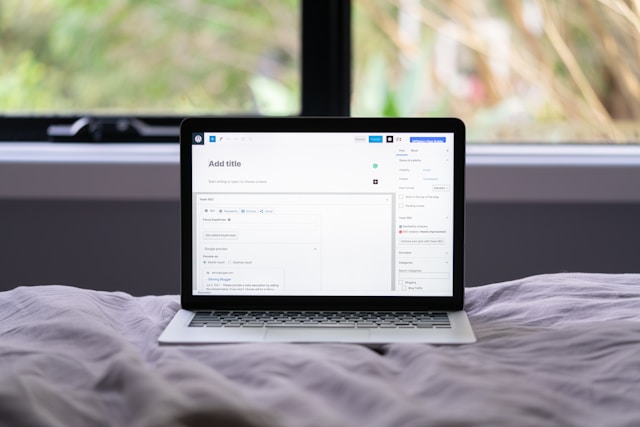How I use social media to get more leads and sales for my business
This is a real story of how I use social media channels to get more leads and sales for my business.
When it comes to social media, the options are endless – Facebook, Twitter, LinkedIn, etc. You could spend all day every day working on these channels and still barely make a dent in your overall marketing efforts.
So how do you decide what to work on? What gets you the best return for your time and effort?
At Process Street, we use social media primarily as an outreach tool. We start conversations with potential customers, drive traffic back to our site to generate leads, and then nurture those leads into paying customers.
Each activity has its own benefits, but I want to focus on how we use social media for outreach in this post.
I’ll tell you what our process is, go over some examples of how it works, quantify the results using data from different sources, and talk about which channels are most effective for this type of content promotion.
Finally, I’ll explain how you can use this process for your own business.
1. Identify potential customers
The first step is to identify potential customers – people who would be interested in what you have to offer but don’t know about you yet.
There are a few different ways to do this:
Look for companies or individuals who are already doing something similar to what you do. Find their websites, social media profiles, and any other online channels they use. See who is following them and then reach out to those people to introduce yourself.
Use search engines to find potential customers. Enter keywords related to your business and see that comes up in the search results. Again, look for their websites, social media profiles, and other online channels.
Look for relevant forums, groups, or communities online and join them. Start participating in discussions and getting to know people. Once you’ve built up some trust, start introducing yourself and your business.
2. Reach out to potential customers
The next step is to reach out to potential customers and start a conversation with them.
This is like cold calling or cold emailing for sales, but with a social media spin. A few examples:
Post a question to the group and see who responds to it. Ask if anyone in the group has struggled with a certain problem and offer your solution. Make sure you’re adding value with this post, not just promoting your product or service. Use hashtags that are relevant to your business when posting on Twitter – people interested in that topic may come across your tweet and respond to it. On LinkedIn, reach out to potential customers by sending them invitations to connect. When they accept, send them a message introducing yourself and telling them how you may be able to help them out.
3 Nurture those leads into paying customers
So you’ve started conversations with some potential customers. What do you do next?
The goal is to turn these leads into paying customers by getting them to take the next step in your sales funnel (i.e. signing up for a free trial, buying something, etc.). You can use social media in many different ways here:
Hire someone on Fiver or another freelancing website to create custom graphics for your company’s social media profiles (Facebook cover photo, Twitter profile photo, header image, etc.). Use these images when sharing interesting content and updates related to your business. If the content you’re sharing is applicable to that person specifically, they’ll be more likely to pay attention
Post valuable industry insights onto your blog and share them on social media. These could be in the form of infographics, Slide Shares, or even just a long-form blog post. If you can get people to read your content and see you as an authority in your field, they’ll be more likely to do business with you
Make a video about your product or service and share it on YouTube and other social media channels. If people can see what your product or service looks like and how it works, they’re more likely to buy it
4. Measure results
So how do you know if all this effort is worth it?
According to Paul Haarman, the best way to measure the results is by tracking how many leads you generate from social and then measuring how many of those leads turn into paying customers. You can use different tools to do this, such as Google Analytics, Hootsuite Insights, or Sales force IQ.
Conclusion:
So you’ve started a business and are using social media to promote it. That’s great, but how do you know if it’s working? And more importantly, how do you make sure it’s working?
In order to measure the results of your social media efforts, you need to track two things: the number of leads you generate from social media and the percentage of those leads that turn into paying customers.
Breaking the Mold: Unconventional Methods for Business Growth with WordPress
If you have implemented WordPress for your website, or are considering migrating to it, chances…
0 Comments13 Minutes
Web and Mobile App Development Trends to Consider in 2024
As technology continues to evolve at a rapid pace, staying ahead is essential for developers and…
0 Comments8 Minutes
What Are the Top 10 Web Development Tools for Beginners?
Web development is the art of building and updating web pages that Internet users Interact with.…
0 Comments13 Minutes
Does Your Branding Need A New Look?
From time to time, it’s important and necessary to check over your branding, to ensure that it is…
0 Comments4 Minutes
Essential Skills for AI-Driven Digital Marketing
Digital marketing is changing a lot. Artificial intelligence (AI) is becoming really powerful and…
0 Comments10 Minutes
A Handbook for Crafting Outstanding Email Automation Plans
Email marketing is an essential tool for communication in digital marketing platforms. Managing…
0 Comments8 Minutes
Branding – What It Means for Your Business
Every single one of us has our own personal brand. Unique to each of us, this lies in who we are…
0 Comments5 Minutes
How to Create a successful SEO campaign, without an SEO agency
The quest for industry-leading SEO can be as financially draining as it is profitable. Despite its…
0 Comments8 Minutes
2 Comments
Comments are closed.









Indeed post! Thank you so much for sharing your marketing strategies with us. Social media is a great platform for generating leads and brand awareness. I found your ideas for reaching out to people very useful and will surely use this trick. Also, would you like to share some tips to build professional networking?
Customers are a significant element of any business/brand. So, from identifying potential leads to nurturing them till they become a regular customer is an essential work to be done. Then, taking care of their needs is what always should be on the priority list. One should definitely track the results while taking off their well-being when they are using your service. Appreciate the post.